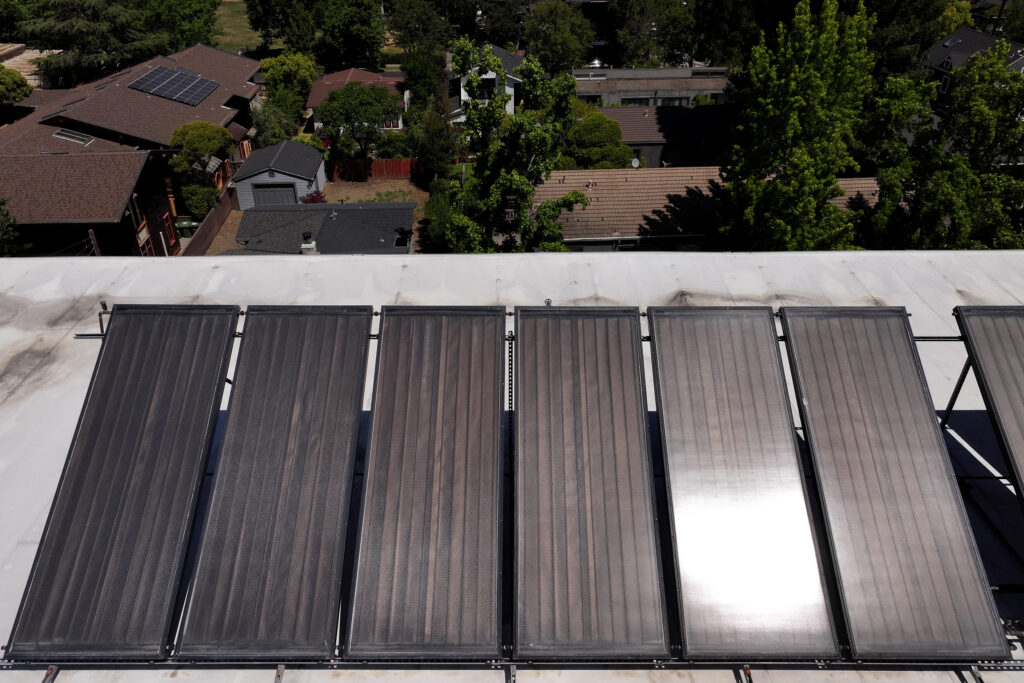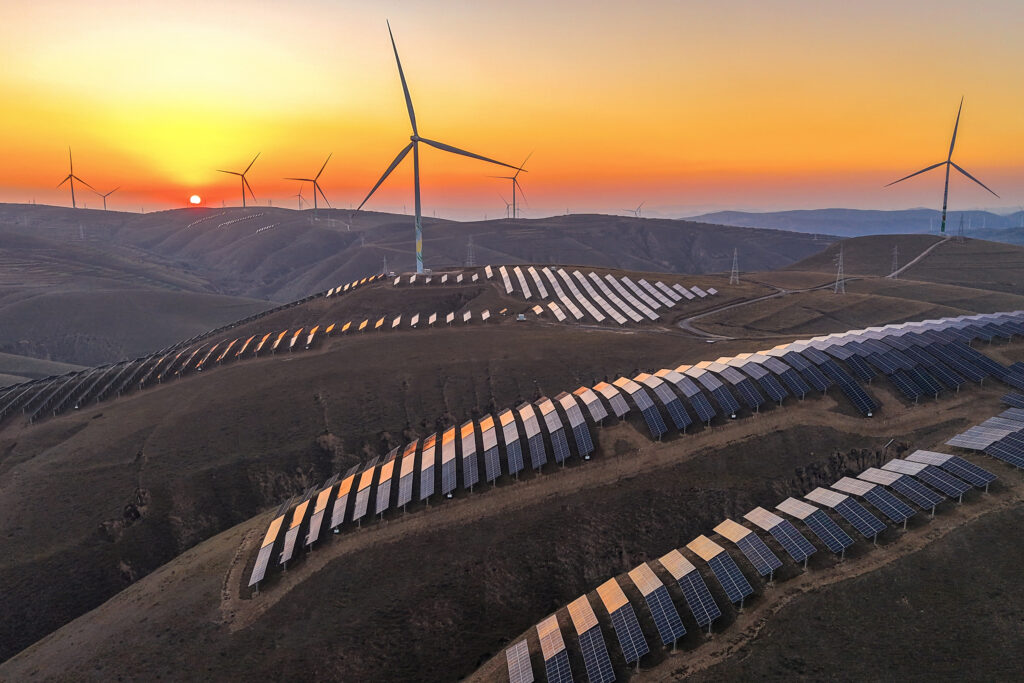Andrew Garberson has a message for drivers in cold-climate states like Minnesota: Yes, you can still drive an electric car.
Public scrutiny over how well EVs perform in cold weather has grown in recent years following high-profile incidents, like one in Chicago last winter, when several Tesla drivers found themselves stuck in line for hours, waiting for their turn at public charging stations as temperatures dipped below zero. Many drivers reported that the cold had not only sapped their batteries of power but also made charging them a major hassle.
Cold weather temporarily reduces the available energy of EV batteries and slows their ability to charge—though they’ll function normally again in warmer conditions. Heating the car’s cabin during winter also requires energy from the battery, meaning less fuel for travel.
Research has found that freezing temperatures can reduce the average driving range of an electric vehicle anywhere from 25 percent to 41 percent, depending on the circumstances. So, a car that can drive 100 miles on a single charge when it’s 70 degrees Fahrenheit outside may only be capable of going 59 to 75 miles in freezing temperatures.
But Garberson, who lives in Iowa and works as the head of growth and research for the EV advocacy group Recurrent, said incidents like the one in Chicago have been overblown in the media, and that drivers shouldn’t avoid buying an electric car just because they live somewhere with cold winters.
“I drive an EV every day, and my winter is almost as harsh as yours [in Minnesota],” he said. “The anxiety around winter and reduced range, while it’s not inaccurate, is just a bit overhyped.”
EVs aren’t the only cars to suffer performance issues under frigid conditions. Conventional gasoline cars lose between 10 percent and 20 percent of their driving range when the temperature drops from 77 degrees Fahrenheit to 20 degrees, according to the U.S. Department of Energy.
If drivers are properly prepared, most EVs should hold up fine in cold situations, Garberson said. Drivers can take certain steps to ensure their commute goes as smoothly as possible, he added, such as preconditioning their batteries before charging them—a setting on most modern EV models that warms the battery to an optimal temperature, allowing for faster charging.
Recurrent also reviews EV models every year to see how much cold weather impacts their range, which could help shoppers choose which model would work best for their needs, Garberson said. This year, the organization looked at 13 popular models, analyzing real-world driving data from over 10,000 vehicles. It found that those models lost 21 percent of their range on average when temperatures drop to 32 degrees Fahrenheit. But the loss varied drastically by model and year.
The Tesla Model X had the smallest range loss, with an 11 percent decrease, while the Volkswagen ID.4 had the largest at 37 percent. The biggest factor, Garberson said, was whether the vehicle had a heat pump, which is more efficient than conventional heating systems and therefore reduces overall power use. Studies show that the power needed to heat the car’s cabin is a big reason for range loss.

The EV models that did not utilize a heat pump, including the ID.4, saw their batteries reduced by an average of 28 percent, compared to an average of 13 percent for cars with heat pumps, Recurrent’s analysis found. Overall, heat pumps added roughly 10 percent extra range to cars during freezing conditions, the report said.
Garberson said cars built in 2020 or later are more likely to have heat pumps installed than older models. Many popular models now have them or will soon have them, he added, noting that Ford added heat pumps to its 2024 F-150 Lightning and is adding them to its Mustang Mach-E in 2025.
“A lot of the [car companies] have added heat pumps because they’ve realized how important it is for people in northern climates,” Gaberson said. “So that’s my No. 1 piece of advice, is just do a little bit of research about the technology in the car because it can make a 10 to 15 percent difference in overall range.”
Ingrid Malmgren didn’t know her Tesla Model Y, which she bought in November 2022, had a heat pump when she decided to take her family on a four-hour road trip from her Vermont home to Quebec City, Canada, last February. The day they left, she said, the high was 7 degrees Fahrenheit.
“I’m not gonna lie, I was nervous about it,” said Malmgren, who works as the senior policy director for Plug In America, another EV advocacy organization. “But it was a complete non-issue. We charged once along the way.”
Malmgren said her experience is a common one for first-time EV buyers. A recent Plug In America survey of more than 3,000 EV owners found that 70 percent of the respondents worried about battery range before buying an electric car. The survey, however, also found that only 35 percent remained concerned after owning an EV.
“What we’ve found with our Plug In America survey is that a lot of people have concerns about cold weather operation of electric vehicles,” she said. “But once they get in an electric vehicle, once they start driving an electric vehicle consistently, they find that these concerns go away.”
The vast majority of the EV owners who remain concerned about range own EVs built before 2020 and live in rural areas, Malmgren added, where charging infrastructure is scarcer and drivers typically travel longer distances.
The survey also ranked owner satisfaction for different EV models, including for the car’s battery range. Out of the 14 different EV models included, Rivan’s R1T truck received the highest satisfaction rating for range performance from the survey respondents. Tesla’s Model Y sedan received the second-highest rating.
Charging speed may be another factor prospective EV buyers want to consider. Garberson said newer models can typically charge faster than older models. His 2021 Hyundai Kona can charge in 30 to 40 minutes, he said, while his wife, who drives a 2023 Hyundai Ioniq 5, can charge her car in 12 to 14 minutes. Some used EVs that were built a decade or more ago, while cheaper, may take even longer to charge or require multiple charges a day, he added.
The most important thing to consider is your driving habits, Garberson said, adding that most drivers won’t even notice when their EV loses range during cold weather.
“The average daily driving distance, it’s like 30.2 miles,” he said. “So it doesn’t matter what EV you have. Any difference in range and cold conditions—or hot conditions, for that matter—isn’t going to be something that materially impacts your daily driving.”
About This Story
Perhaps you noticed: This story, like all the news we publish, is free to read. That’s because Inside Climate News is a 501c3 nonprofit organization. We do not charge a subscription fee, lock our news behind a paywall, or clutter our website with ads. We make our news on climate and the environment freely available to you and anyone who wants it.
That’s not all. We also share our news for free with scores of other media organizations around the country. Many of them can’t afford to do environmental journalism of their own. We’ve built bureaus from coast to coast to report local stories, collaborate with local newsrooms and co-publish articles so that this vital work is shared as widely as possible.
Two of us launched ICN in 2007. Six years later we earned a Pulitzer Prize for National Reporting, and now we run the oldest and largest dedicated climate newsroom in the nation. We tell the story in all its complexity. We hold polluters accountable. We expose environmental injustice. We debunk misinformation. We scrutinize solutions and inspire action.
Donations from readers like you fund every aspect of what we do. If you don’t already, will you support our ongoing work, our reporting on the biggest crisis facing our planet, and help us reach even more readers in more places?
Please take a moment to make a tax-deductible donation. Every one of them makes a difference.
Thank you,

















